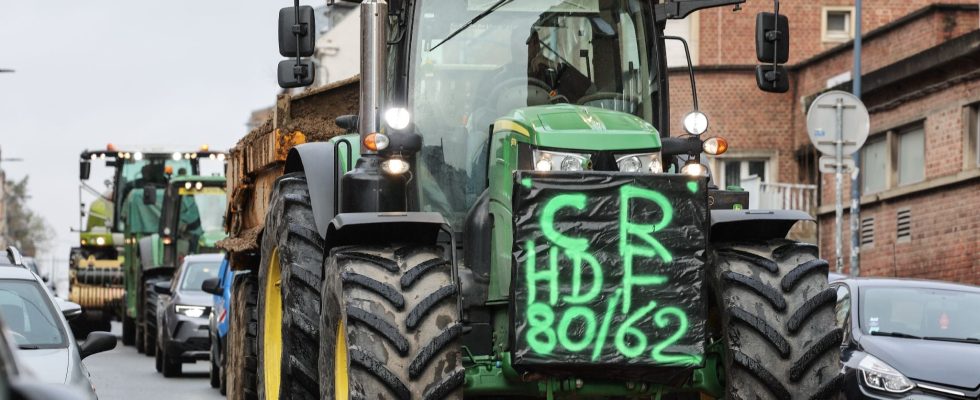This is one of the main demands of farmers: decent income. Opposite, the Minister of Agriculture, Marc Fesneau, promises to respond to their anger while admitting that “the question of remuneration is still before us”. However, time is running out on the eve of the opening of the Agricultural Show which promises to be hectic.
But how much does a farmer really earn on average in France? First element of the answer: income is disparate between the different operators. It is also necessary to differentiate the situation of the salaried worker, who receives a fixed salary close to the minimum wage, from the self-employed farmer and whose income fluctuates depending on the markets, the weather or health crises, the situations however vary greatly. .
Measuring the remuneration of non-employee operators is difficult “because it comes both from their work, but also from the capital invested in the operation, such as part of the land which they may own”, underlines Nathalie Delame, specialist in income of farmers at the National Research Institute for Agriculture, Food and the Environment (INRAE).
The current income before tax per operator, which measures the economic performance of the farm, amounted on average in 2022 to 56,014 euros, according to the latest figures available from the statistical service of the Ministry of Agriculture, Agreste. This amount went up to 124,409 euros for pig breeders, who benefited that year from a sharp rise in pork prices, to 78,590 euros for wine growers, but to 26,601 euros for beef cattle breeders. and 19,819 euros for goat and sheep breeders.
Significant income gaps
“The balance of power is very different (depending on the interlocutor) and ten farmers in the same production will not have the same prices,” underlines the expert. According to Agreste, once the repayment of loans and the operator’s social security contributions have been deducted, the available balance per operator was on average in 2022 49,580 euros, up 30% compared to 2021, after an increase of 60% the previous year. These two years were marked by soaring grain prices. Figures are not available for 2023, but Agreste has already indicated that the year had been less successful overall for farmers.
According to another statistical source, INSEE, the average monthly income of an operator in 2021 was 1,860 euros, less than the average net salary of 2,524 euros for employees in the private sector. Here too, it varied greatly depending on the type of production. For example, the average monthly income is higher for crop production: 2,760 euros for wine growers and 2,150 euros for producers of field cereals. Note that the study took place before the war in Ukraine.
And for the others? We drop to 1,480 euros for cattle breeders and 680 euros for goat and sheep breeders. In another report, INSEE also calculated that in 2018, 18% of agricultural households lived below the poverty line, compared to 13% of households with earned income. However, their living conditions are generally more favorable, since they often own their home and can sometimes consume their own production. Result: in “living conditions”, the poverty rate of agricultural households was 6.1% compared to 11.7% of French people on average.
A higher standard of living in the North
Another important point: some gain nothing at all, or even lose money. Still according to the INSEE study, more than one in seven farmers experienced zero or deficit income in 2021. And they are more than one in four sheep or goat breeders. Added to this are disparities depending on the region. In 2018, INSEE noted: “The standard of living of agricultural households is the highest in Île-de-France […] It is generally more significant in the north-east of France and much lower in the South, notably in Lozère, Creuse, Ariège, Ardèche, and even more in Martinique and Reunion Island. Income gaps essentially linked to the nature of agricultural production”, according to the statistics institute.
INSEE also notes that only a third of the total resources of agricultural households then came from agricultural activity, the rest coming from salaries, that of the spouse or a second job, or from another activity such as tourism on the farm. or even income from assets. “Income from assets constitutes the third most important source of income for agricultural households, i.e. 20% of their disposable income,” adds INSEE. “Enough to cushion the shock for the luckiest.
